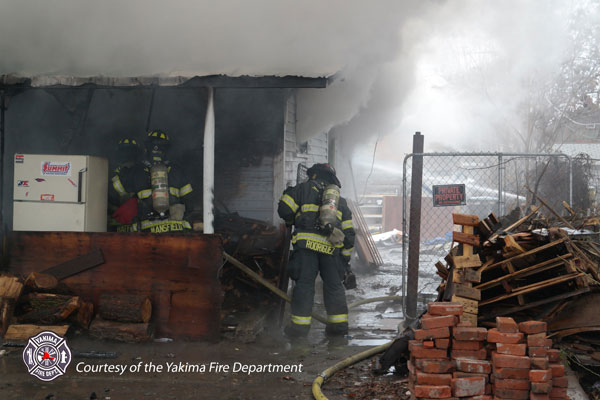
By Alex Langbell

There’s a saying, “It’s so easy I can do it with my eyes closed.” This is the philosophy I recently introduced into our latest recruit academy. Let’s face it, some of the most dangerous stuff firefighters do is with limited visibility, whether it be using power cutting tools on an 8/12 pitched roof in the middle of the night or finding the access to a basement in a smoke-filled structure fire without falling into it. Add a face mask that allows for limited peripheral vision–one that hopefully isn’t dirty, scratched up, or fogged up. Add a spectacle kit for those who wear glasses. I think you see where I’m going with this.
On our best days we start out with limited vision attempting to do some of the most physically challenging, time-sensitive tasks an employee is asked to do. If you are able to complete tasks such as extending a section of hose, tying off a search line, and securing your self-contained breathing apparatus (SCBA) emergency air line to your partner, you will more efficient and effective completing your assigned task. When I first started this type of training, I watched recruits with their eyes closed stumble attempting to do tasks, taking precious minutes of time. But as they continued practicing over and over, they became as fluent and capable as someone doing it with their eyes open. At one point of the academy we had recruits taking hydrants with their eyes closed. (Disclaimer: Of course this doesn’t involve pulling the supply hose off of the hose bed.) By teaching them to be able to secure a plug in such a manner, they understand about port location, stem direction, about not placing down their hydrant wrench, about knowing what their hydrant bag has and what it feels like. Because in our world, not every fire happens during the day, next to a street lamp. Flashlights aren’t bullet proof, batteries don’t last forever, and not everyone has a working thermal imaging camera.
Next time you are looking for a challenge, close your eyes and practice tasks you might find yourself doing in every fire and see how you do. Place a hose strap around a victim or switch a downed firefighter to a RIT pack’s SCBA bottle. The better you prepare yourself in these situations, the more time you will buy possibly make the outcome of whatever you are attempting to do more desirable.

Alex Langbell is a captain with the Yakima (WA) Fire Department.
MORE TRAINING BULLETINS

